KONICA MINOLTA DiMAGE A2
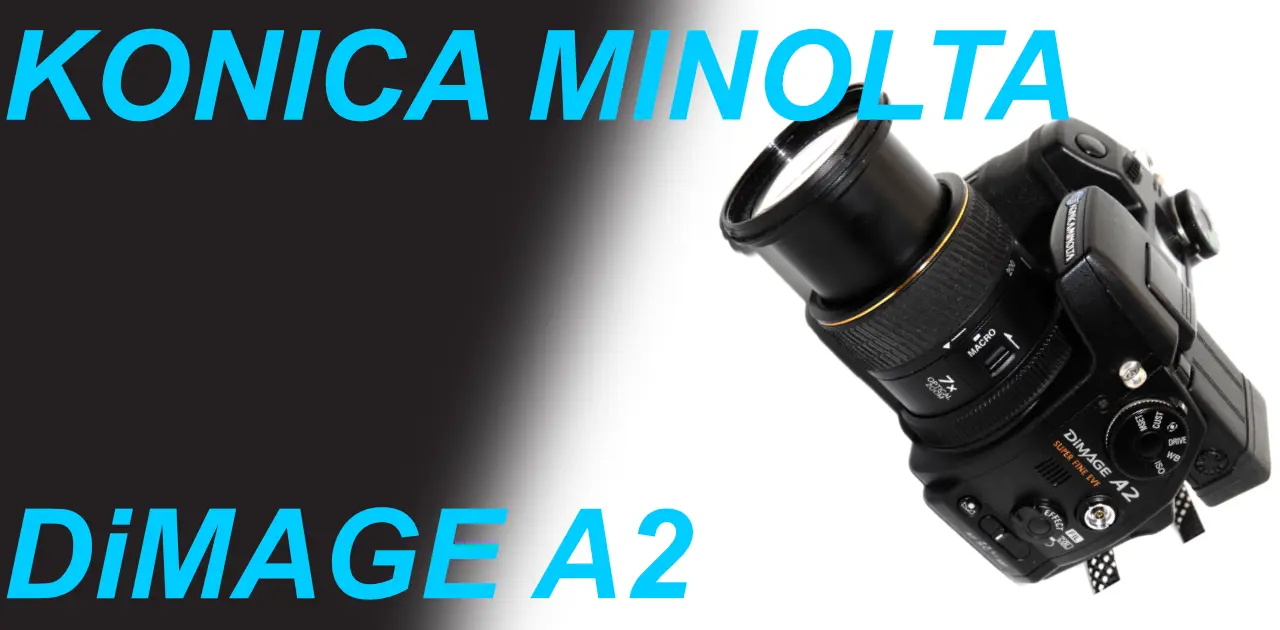
Konica Minolta high-end digital camera
A Review and Photo example of the DiMAGE A2 digital cameras.
Table of contents
Gallery
Review
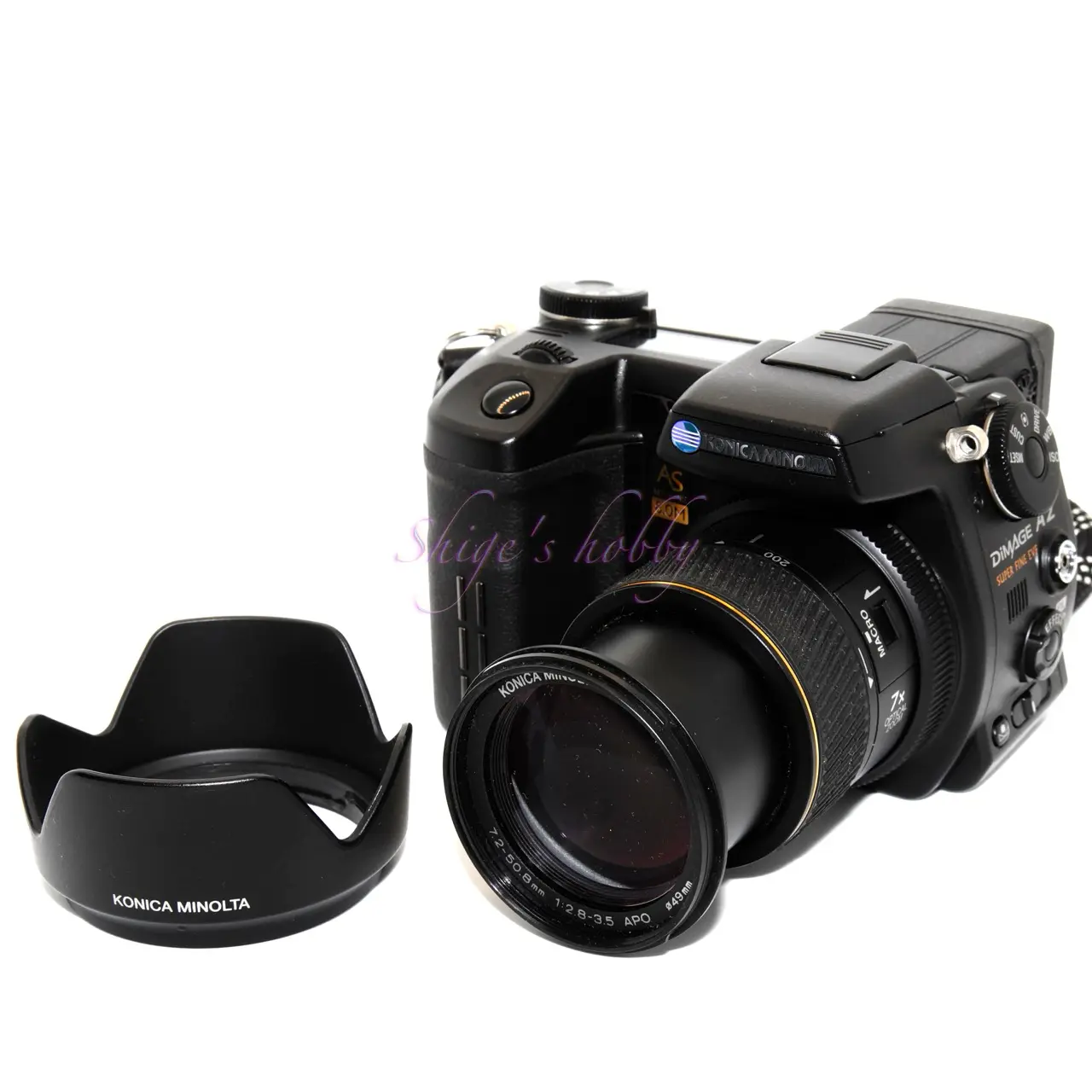
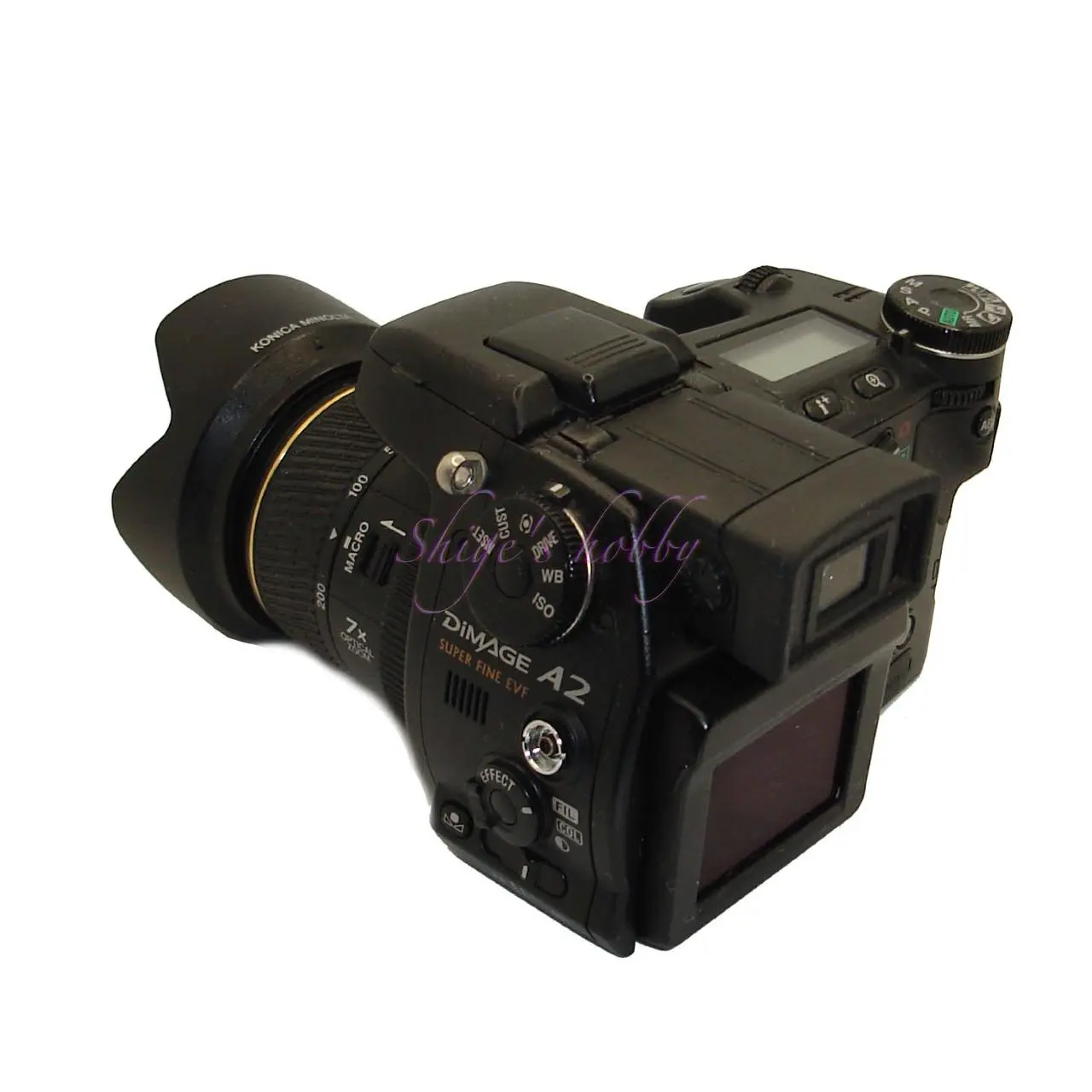
1.Overview
The DiMage A2 is a lens-integrated digital camera released by Konica Minolta in 2004.
The main specifications of the camera are an 8 megapixel CCD sensor, a 922,000 pixel EVF, and a lens that covers 28mm to 200mm in 35mm format. The AntiShake sensor-moving image stabilization is an early device that can correct blur in three steps. Detailed specifications are summarized in the table below.
The accessory shoe has an original MINOLTA shape, so if you are looking for a flash, you will need to look for one made by MINOLTA. The PROGRAM FLASH 3600HS(D), 5600HS(D), and 2500(D) are compatible products. As of 2023, all of them are available at low prices.
The recording media is a compact flash, and with firmware 1.1.3j or later, media of 4GB or more can be used. The raw image format is MRW (short for Minolat RaW?), and each image is 12.1MB. If you use an 8GB media, you can shoot about 600 shots with only Raw recording. However, the shot counter on the camera body will not go above 352.
The battery is the same lithium-ion battery NP-400 as the α7 Digital, and the same voltage and shape are used in various models such as the SIGMA SD14 and PENTAX K20D, so it is fortunate that it is still easy to obtain on the market as of 2024. I was able to shoot about 150 shots with a slightly worn-out battery, so photographers who take a lot of shots will probably need a spare.
As for the firmware, the one I own is running firmware 1.1.4j, the final version.
As of January 2023, the KENKO TOKINA website, which took over maintenance, appears to have deleted all information on KONICA MINOLTA products, and it is no longer possible to obtain firmware.
The firmware information for the Dimage A2 is available on KONICA MINOLTA EUROPE, although it is written in English and may not be applicable if it is managed by region.
I hope Japanese manufacturers will also keep as much information about their old products as possible. There is a possibility that the products you created are still in use.
2.Usability
The DiMAGE A2 is a Konica Minolta digital camera.
I caught this camera because it was being sold for four figures at a certain camera shop’s New Year’s junk sale. This camera was originally priced at 140,000 yen, so I was able to use it at a reasonable price because it was an old model.
The reason it was junk was because the EVF was not working properly, and when I searched for information on the web, I found similar EVF-related problems. It seems that this model’s proud 922,000 pixel EVF will wear out due to aging, but fortunately the rear LCD screen can be used normally, so there is no problem with shooting or setting.
The successor model, the DiMAGE A200, released nine months later, has a regressed EVF to the same specifications as the DiMAGE A1, probably due to cost reduction, so it can be seen that the A2’s EVF was cutting edge and expensive at the time.
The wide-angle 28mm (7.2mm) lens has a barrel distortion of about 4% when shooting distant landscapes in Raw, and the distortion is noticeable when shooting buildings, so correction is required during development. I don’t use it much, but the 50mm to 200mm (13mm to 50mm) has a clear image without distortion.
The lens is designed in the same way as the MINOLTA SLR lenses, and I really like the design, including the gold lines. The DiMARGE high-magnification zoom series was released as the series model numbers DiMARGE 5, 7, 7Hi, A1, A2, and A200. Since the same lens has been used throughout the series, it has not changed since 2001, and by 2004, when the A2 was released, the design felt old, with distortion on the wide-angle side.
The AF speed is slow, and at night or with subjects that are difficult to distinguish, the AF focus mark will light up and the shutter will be released even if the subject is not in focus. It is difficult to determine the focus state with the 130,000 pixel rear LCD, and the problem would be alleviated if I could use the 920,000 pixel EVF, but as mentioned above, the EVF on the camera I have is dead, so I can’t use it.
The image quality under sunny skies is satisfactory, but the small sensor size is difficult to deal with, and there are times when white blowout, black crush, and noise in dark places are noticeable.
Manual focusing is possible, so change the camera body mode to MF and operate the focus with the rotating ring at the base of the lens. Minolta’s autofocus SLR lenses have a zoom ring at the base and a focus ring at the tip of the lens, and although the lenses have a similar design, the difference in ring placement makes operation confusing.
Also, since the focus ring at the base is in a cramped position just in front of the camera body, it is not very easy to operate and I don’t feel like using manual focus actively. It is basically a camera to use with autofocus.
It is equipped with a sensor-shift type image stabilization mechanism. However, since it is an early image stabilization mechanism, if you expect too much effect, you will mass produce blurry photos.
3.Summary
In conclusion, to sum up the DiMage A2, it’s a good camera for autofocusing in bright sunlight.
The camera has a lot of buttons, and most operations can be done without going into the menu, which is nice. However, the manual focus operation is half-baked, with a system that feels like a mix between a compact digital camera and a single-lens reflex camera.
Because it’s a small 2004 sensor, there’s noticeable noise in the results of photos taken in dark places.
Specification and Competitor
2004 was the peak of the lens-integrated digital camera era, and Nikon released the CoolPix 8400 and 8700, and Olympus released the C-8080, all with the same 2/3-inch sensor. Also, during this period, interchangeable lens APS-C size sensor digital cameras such as the α7 Digital were released at slightly higher prices, and sales of lens-integrated cameras with slightly larger sensors were becoming difficult.
If this body had a sensor of 1 inch or more, the position of the camera may have been different.
This shape has been inherited by the Sony RX100 series, which is a direct descendant of Minolta, the TZ, FZ, and TX series from the giant of home electronics Panasonic, and the Panasonic-OEM LEICA V-LUX series.
The fact that this type of camera still exists in 2024 proves that the aim of this camera to be a lens-integrated camera with a high-magnification zoom was not a bad one.
| Item | DiMARGE A1 | DiMARGE A2 | DiMARGE A200 |
| Camera Effective Pixels | 5 megapixels | 8 megapixels | ← |
| focal length (distance) | 7.2〜50.8mm F2.8〜3.2 (35mm format :28mm〜200mm) | ← | ← |
| Lens configuration | 16elements 13group | ← | ← |
| image sensor | 2/3 sensor | ← | ← |
| image processing | SUPHEED CxProcess III | SUPHEED CxProcess II | SUPHEED II CxProcess III |
| back LCD | 1.8 inch 118,000 pixels Tilt | 1.8 inch 134,000 pixels Tilt | 1.8 inch 134,000 pixels variegated angle |
| viewfinder | 0.44-inch, 235,000 pixels Tilt | 0.44-inch 923,000 pixels Tilt | 0.44-inch, 235,000 pixels Tilt |
| battery | lithium-ion battery (NP-400) | ← | ← |
| Dimensions (mm) | Width x Height x Depth 117 × 85 × 113.5 | ← | Width x Height x Depth 114 × 80 × 115 |
| Weight (g) (body only) | Approx. 560 | Approx. 565 | Approx. 505 |
| Release year | Sep. 2003 | Feb. 2004 | Nov. 2004 |
| Price(Yen) | 130,000(Open) | 140,000(Open) | 100,000(Open) |
Options
- Grip
- Tele-converter ACT-100
- Wide-converter AWT-100
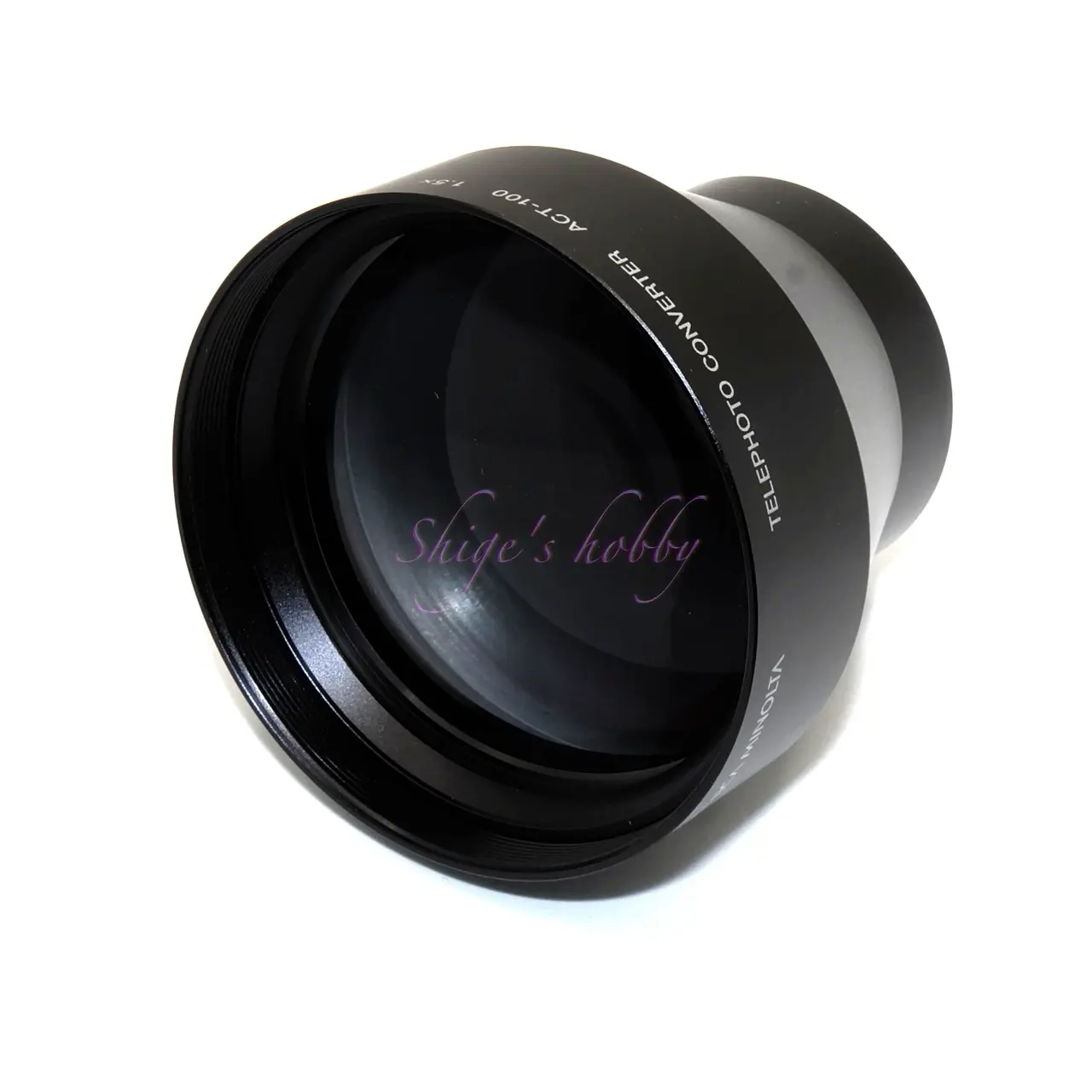
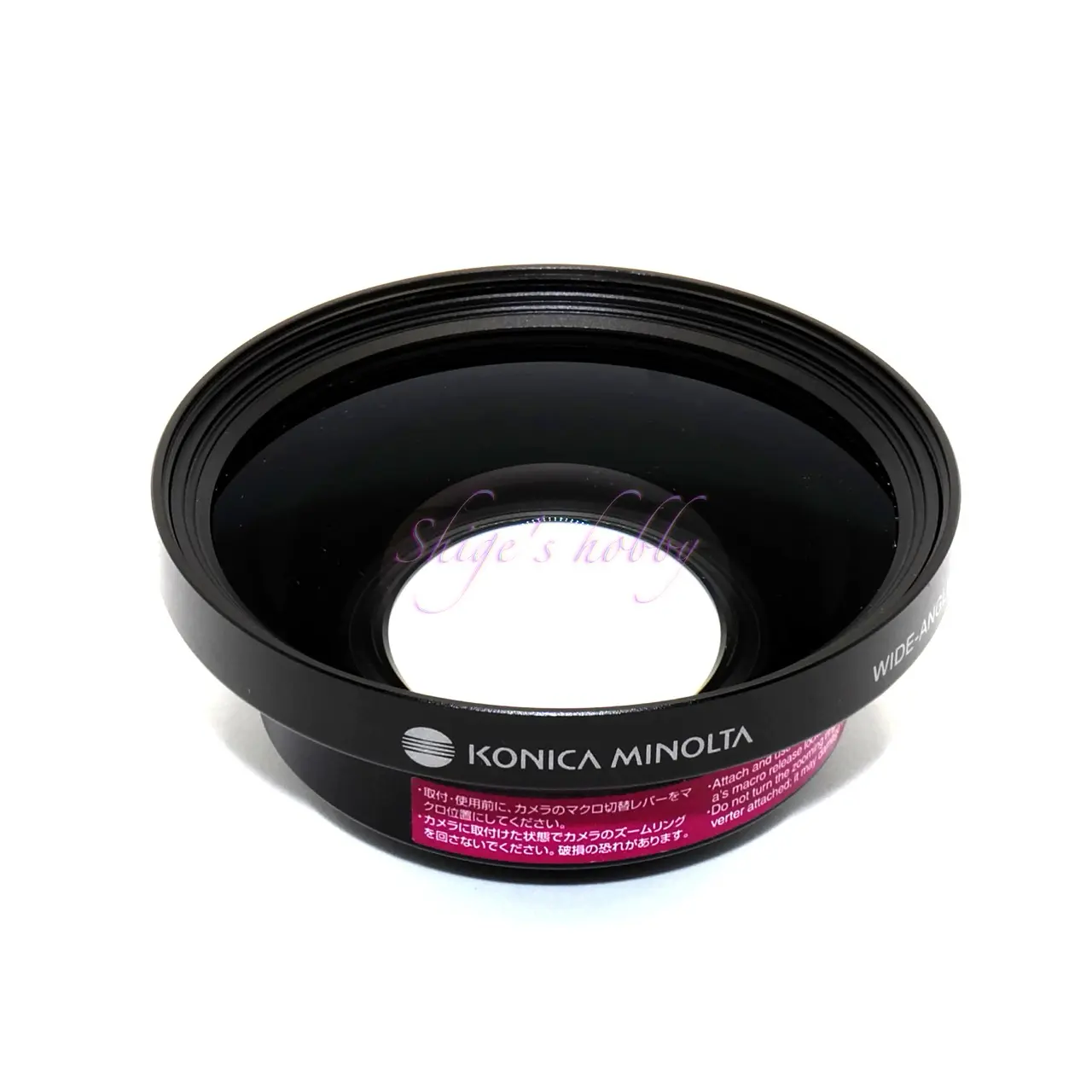
| Tele-converter ACT-100 | Wide-converter AWT-100 | |
| Lens configuration | 5elements 3group | 3elements 3group |
| converter magnification | x 1.5 | x 0.8 |
| Composite Focal Length | 76.2mm (35mm film equivalent: approx. 300mm) | 5.8mm (35mm film equivalent: approx. 22mm) |
| composite aperture | Unchanged | ← |
| Size | φ89×80mm | φ89×36mm |
| Weight (g) | 500g | 250g |
| Supported models | DiMAGE 7i/7Hi/A1/A2 | ← |
| Note | Use at the telephoto end of the body lens | Use at the wide end of the body lens |
After purchasing the camera, I got optional lens converters, a teleconverter (AWT-100) and a wide-angle converter (ACT-100). Although these are camera options from nearly 20 years ago, there were quite a few listings on Yahoo! Auctions and Mercari, and I was able to get them on Yahoo! Auctions for a few thousand yen. The item I got had scratches on the exterior and scratches on the lens, but nothing that affected the image.
Both are huge converters, and when you attach them to a camera, the impression of the camera changes.
The wide-angle converter multiplies the angle of view by 0.8, making the lens a wide-angle lens of 28*0.8=22.4mm, and the distortion, which is 4% at 28mm, worsens to 8%, resulting in distortion like a fisheye lens.
The instructions for the wide-angle converter state that the focal length of the lens should be fixed at the 28mm position by turning the macro switch, so when you attach it, it becomes a 22.4mm prime lens camera. The amplification of distortion is a concern, but it’s fun as a wide-angle lens.
There is a warning that the teleconverter should only be used at the telephoto end, and the only non-recommended usage is when zooming with the teleconverter attached, with focal lengths of 42mm to 150mm (35mm equivalent, actual focal length 28mm to 100mm), where a large amount of kicking was observed. When zooming, I supported the teleconverter while turning the zoom ring. If I were to attach a teleconverter, which is heavier than a wide-angle converter, to the lens in the extended position (focal length 200mm position) and shoot outdoors, I was afraid that the lens would snap.
The teleconverter and wide-angle converter were sold at a list price of 49,800 yen. If you buy them as a set with a camera, even with a 20% discount, it should be close to 200,000 yen, so those who bought them at the time of release were probably hobbyists who fell in love with the system and took the plunge, or wealthy people. . The lens converter is a screw-in type with a diameter of 49mm, so it can be used with other lenses. However, the performance of the converter is not that high, so there is no need to do this.
Reference links
- DiMAGE A1 KONICA MINOLTA News release
- DiMAGE A2 KONICA MINOLTA News release
- DiMAGE A200 KONICA MINOLTA News release
- Pc-watch DiMAGE A1 article
- Pc-watch DiMAGE A2 article
- Pc-watch DiMAGE A200 article
Update history
- 2025.4.23
- 2024.10.19
- 2023.1.24

Leave a Reply